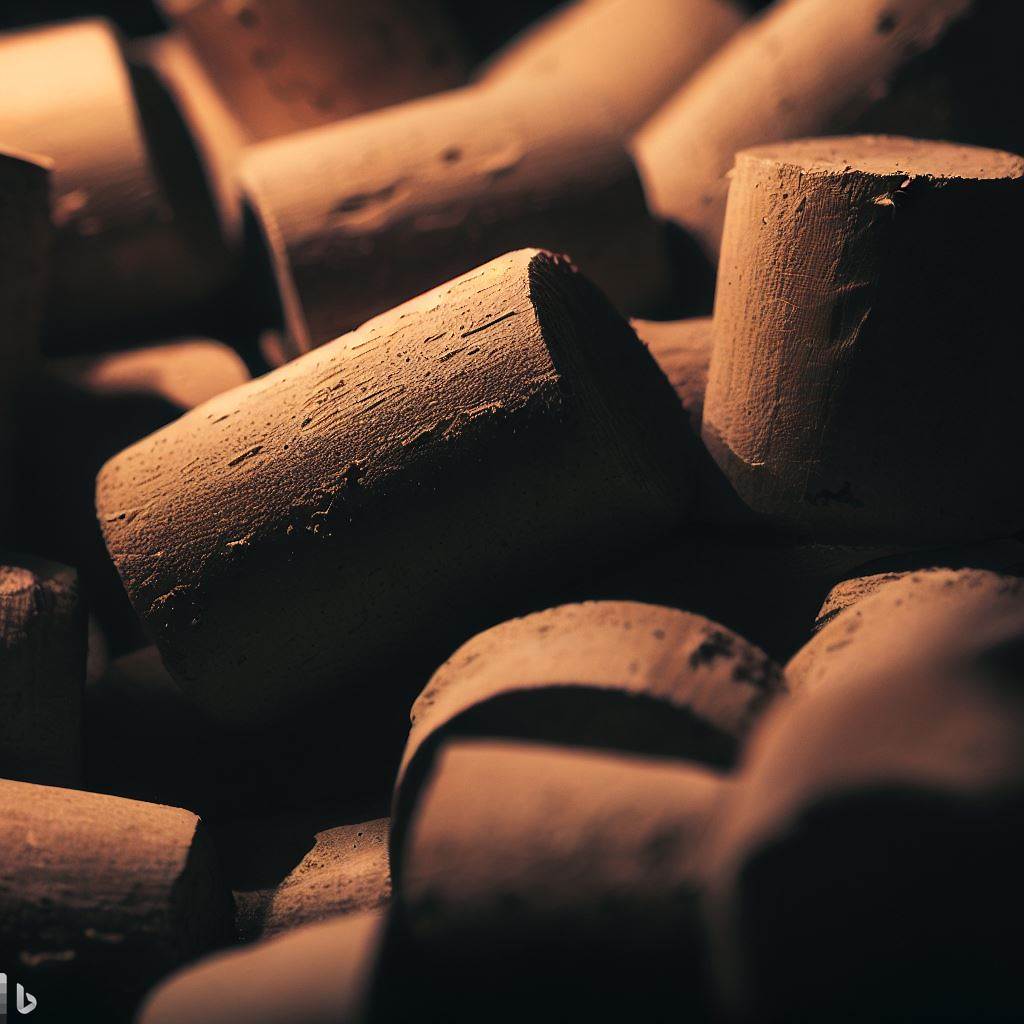In our article, discover "what are briquettes" and delve into the advantages they offer in comparison to traditional logs and firewood. Explore the higher energy efficiency, reduced emissions, and longer burn time that pure wood briquettes provide. Uncover how these compact wood fuel sources are revolutionising the way we heat our spaces, with their convenient handling and storage.
Learn how quality briquettes are becoming an increasingly popular choice for eco-conscious individuals seeking sustainable and efficient heating solutions. Gain insights into the numerous benefits as you explore the possibilities of harnessing the power of wood briquettes.
What are Briquettes?
A definition from the Collins English Dictionary is:
“Briquettes are a small brick made of compressed coal dust, sawdust,
Wooden briquettes (not to be confused with charcoal briquettes) are compact blocks, often brick shaped, which are made from compressed wood waste or biomass materials. They serve as a sustainable and efficient wood fuel source for various heating applications. In answering “What are briquettes”? we provide a definition, explain its composition, and discuss the production process.
A definition of wooden briquettes
Also known as biomass briquettes or heat logs, they are solid fuel blocks manufactured by compressing wood waste or biomass materials under high pressure. The compression process removes moisture and binds the particles together, creating dense and uniform blocks that can be used as a reliable and eco-friendly fuel alternative.
What are briquettes made of – composition explained
Wood waste, such as sawdust or wood shavings, is commonly used as the primary feedstock for wooden briquettes. Other biomass materials like agricultural residues, nutshells, or even paper waste can be mixed in for added benefits, this is why they are sometimes called biomass briquettes. They are environmentally friendly as many materials included would otherwise have ended up in landfill.
Other types of fuel briquettes
Our focus in this article is wooden quality briquettes, there are many different types of fuel briquettes including:
- Charcoal briquettes - wooden briquettes are often confused with lump charcoal briquettes. There are similarities between the two with charcoal briquettes being made from carbonised wood, coal, and other carbon-rich materials. When burned inside charcoal briquettes emit carbon dioxide and as such should not be burned indoors
- Peat briquettes - these are compressed blocks made from raw peat moss. They burn at a very high temperature, have a unique aroma and are commonly used as a fuel source for heating and open fires
- Sawdust briquettes - are also similar but use almost exclusively sawdust to form the sawdust briquettes as opposed to other materials.
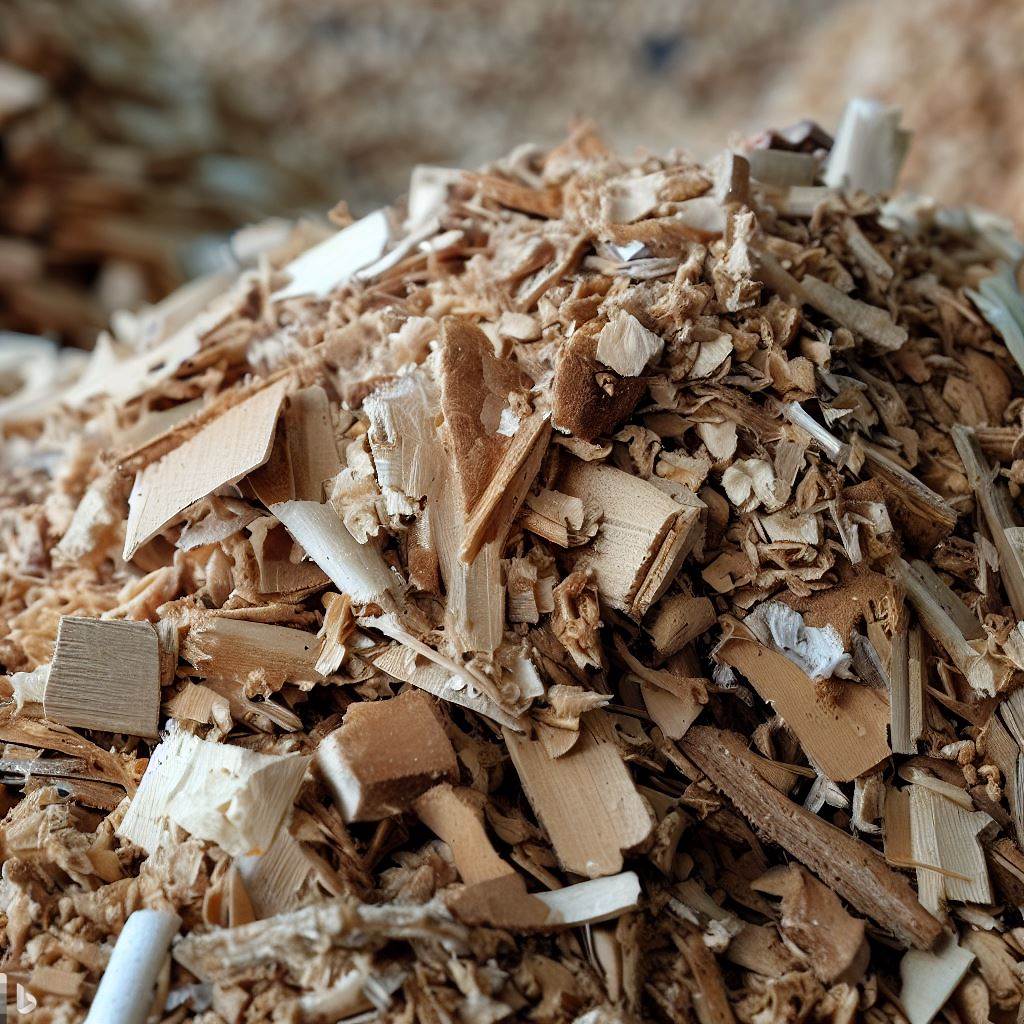
Some of the materials used in the composition of wooden briquettes
Production process
The production process for wooden briquettes includes the following steps:
- Drying - the mixture (often called feedstock) is dried to reduce its moisture content. This ensures better combustion and prevents excessive smoke or emissions during burning
- Grinding - the dried material is finely ground to obtain a consistent particle size. This step helps in achieving uniformity in the briquette composition and ensures optimal compression
- Mixing and binding - the ground feedstock is mixed with binding agents, often a natural adhesive such as lignin or starch, to enhance the cohesiveness and strength of the briquettes. The binder helps the particles stick together during compression
- Compression - the resulting mixture is subjected to high levels of pressure within a briquetting machine or extruder. The pressure creates compressed material, forcing the wood fibres to bind together and form solid blocks
- Cooling - once the briquettes are formed, they are allowed to cool and solidify
- Packaging - they can finally be packaged and stored for sale and transit
What are the advantages of briquettes?
There are many advantages of briquettes as a fuel source, making them a great choice for various heating applications. Below we explore some of the main benefits of wood briquettes:
1) High energy efficiency
Wood briquettes demonstrate exceptional energy efficiency, allowing them to generate a substantial amount of heat from a relatively small volume (which is why they are often called heat logs). This remarkable efficiency ensures the fuel is used optimally, extracting the maximum heating potential. By efficiently converting biomass materials into heat energy, wood briquettes offer an efficient and sustainable heating solution, contributing to cost reductions and reducing environmental impact.
2) High calorific value and energy density
They have a high calorific value, are very energy rich and have a high energy density. This means they contain a substantial amount of energy per unit mass or volume, resulting in sustained and long-lasting heat output.
3) Cost-effectiveness
Choosing briquettes is a highly cost-effective choice when compared to many other fuel sources, making them a right choice for budget-conscious or restrained buyers. They are often competitively priced, providing excellent value for money. Considering their high energy efficiency and extended burn time, wood briquettes offer significant savings in fuel costs over time.
Their ability to generate substantial heat from a relatively small volume means that less fuel is required to achieve the desired warmth, resulting in cost savings. Additionally, the longer burn time of wood briquettes reduces the frequency of refuelling, further contributing to cost-effectiveness. With their cost advantages, wood briquettes allow individuals to enjoy efficient and economical heating without compromising on warmth and comfort.
4) Long-lasting heat
They burn longer, making them an excellent choice for sustained warmth. Their dense composition allows for a slow and steady burn, ensuring a consistent release of heat over an extended period. This characteristic eliminates the need for frequent refuelling, allowing you to enjoy uninterrupted warmth without interruptions or constant maintenance.
The efficient and sustained heat output of wood briquettes makes them particularly well-suited for heating applications where consistent warmth is desired, such as in a wood burning stove or fireplace during chilly winter nights. With wooden briquettes, you can experience efficient and long-lasting heat, creating a cosy and comfortable environment for you and your family and friends.
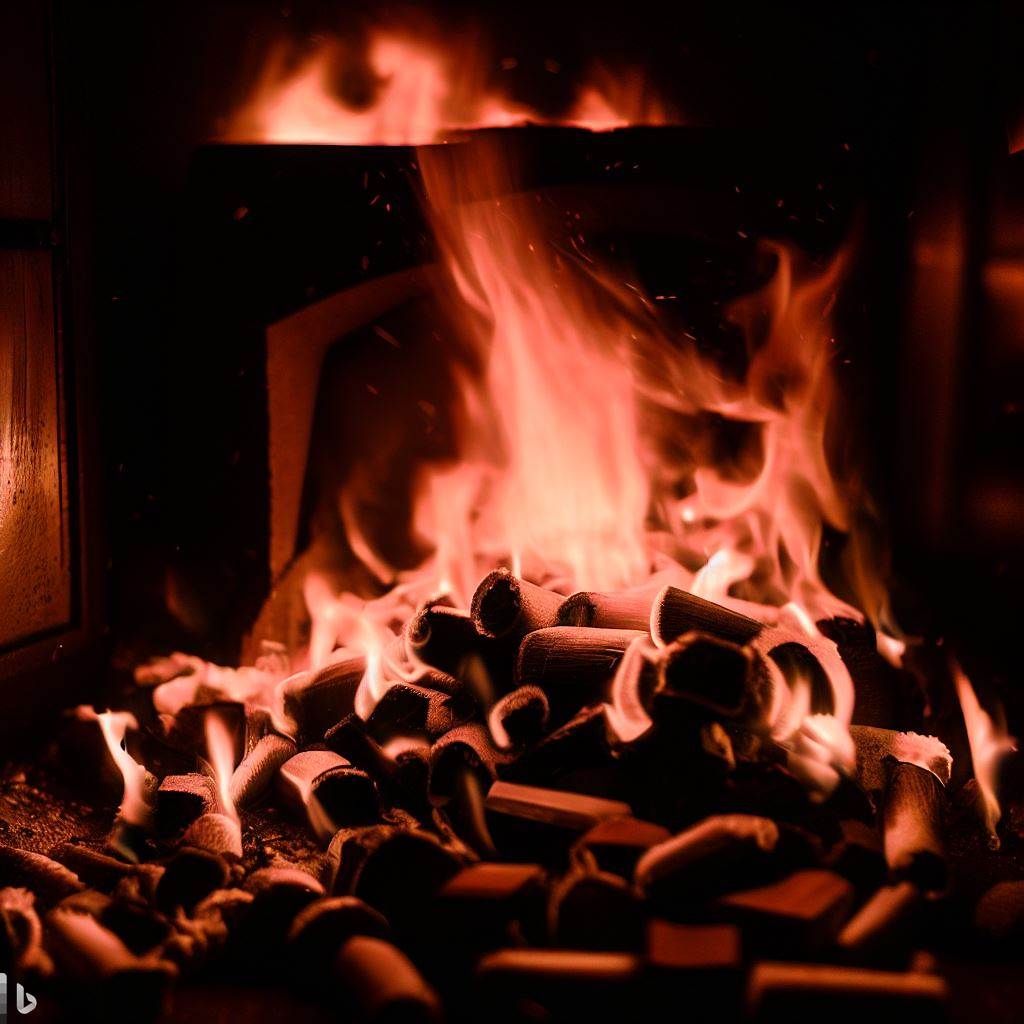
Wooden briquettes ablaze
5) Environmentally friendly qualities
Another one of the advantages of most briquettes is that they are an environmentally friendly choice for heating and reduce the use of fossil fuels. They are typically made from recycled wood waste or sustainably sourced biomass materials, reducing the need for new timber harvesting. Additionally, wooden briquettes produce lower emissions and have a lower carbon footprint compared to fossil fuels. So, buy wooden briquettes as a sustainable fuel source, one which uses materials which would otherwise often have ended up in landfill.
6) Consistency of moisture content
They are manufactured with controlled moisture content, ensuring a consistent burn. Lower moisture levels contribute to better combustion, very little smoke production, and improved overall heating efficiency.
7) Resistance to mould and pests
Due to their manufacturing process and compact nature, wooden briquettes are less susceptible to mould growth and pest infestations compared to traditional firewood. This ensures a clean and hassle-free fuel source for heating.
8) Ease of storage and handling
Wooden briquettes have a compact size and uniform shape, making them easy to handle and stack. Their standardised dimensions save storage space, maximising space utilisation. They are also easier to transport compared to bulkier firewood logs.
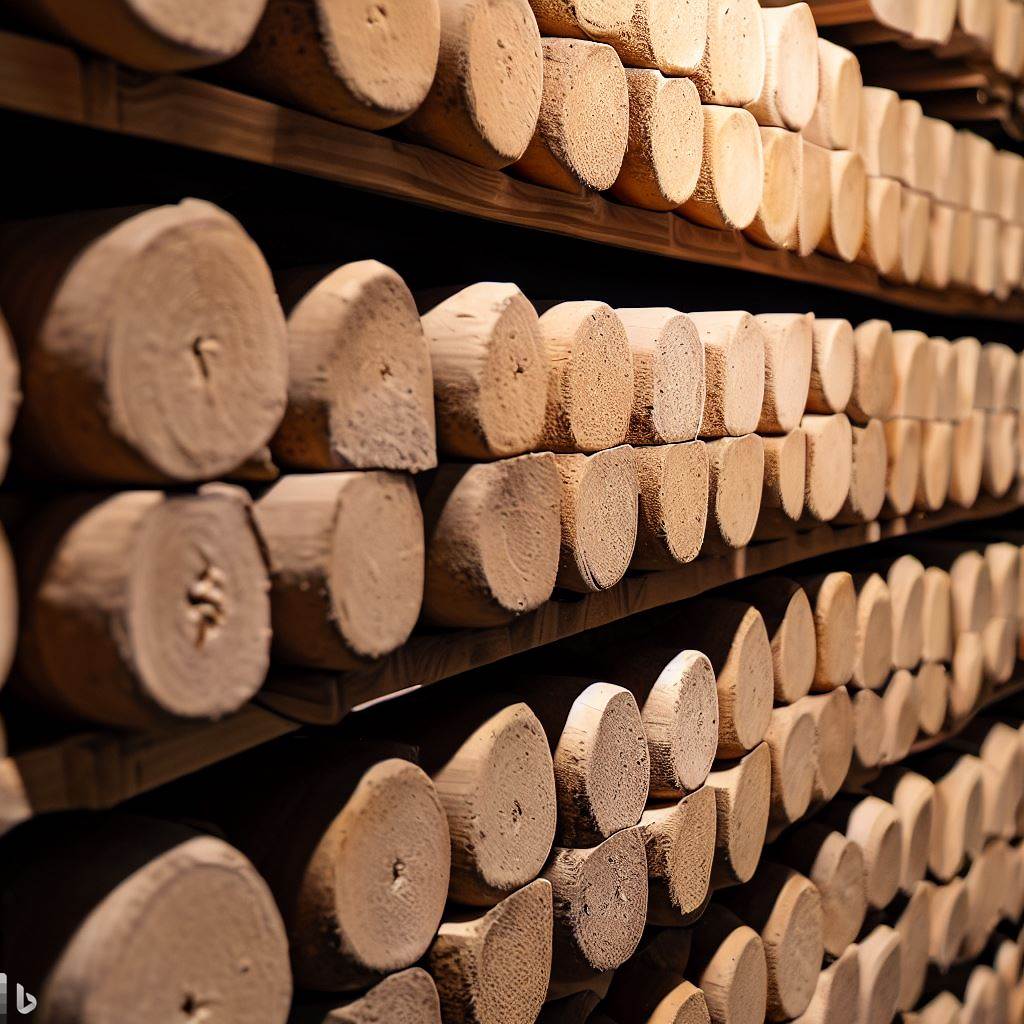
Wooden briquettes are easy to stack, store and handle
A versatile choice!
Wood briquettes offer versatile applications, making them a flexible fuel source for various heating needs and beyond.
Wood burning uses
Wood briquettes are highly suitable for use in a wood burning stove, wood burner, or in fireplaces, and boilers. Their compact size and uniform shape make them easy to handle and fit into these heating appliances. Whether you want to warm up your living room, create a cosy atmosphere, or generate heat for cooking, wood briquettes provide an efficient and reliable fuel option. To get a fire started, we would recommend using them with kindling.
A variety of other applications
In addition to residential heating, wood briquettes find applications in commercial and industrial settings. They are commonly used in restaurants, hotels, and other businesses that use wood-burning appliances for heating or cooking purposes. Moreover, wood briquettes play a role in industrial processes that require a sustainable and cost-effective wood fuel source, such as in the manufacturing sector or energy generation.
The versatility of wood briquettes extends beyond traditional heating applications. They can be used in barbecues (charcoal briquettes and peat briquettes burn well too), outdoor fire pits, and camping trips to create a warm and inviting atmosphere. With their clean burn and reduced emissions, wood briquettes are a preferred choice for environmentally conscious people in a range of settings.
Wood briquettes vs firewood
When comparing wood briquettes vs firewood, several key differences emerge. Wood briquettes are denser and more compact, providing a higher energy density and longer burn time compared to firewood.
They have a consistent low moisture content, ensuring reliable and efficient combustion. Wood briquettes also ignite more easily and produce less smoke, very little ash and emissions. Additionally, their uniform shape and standardised dimensions make them easier to handle, stack, and store compared to irregularly shaped firewood logs.
Overall, wood briquettes offer a convenient, efficient, and eco-friendly alternative to traditional firewood, providing consistent heat output and reducing environmental impact and fossil fuels use.
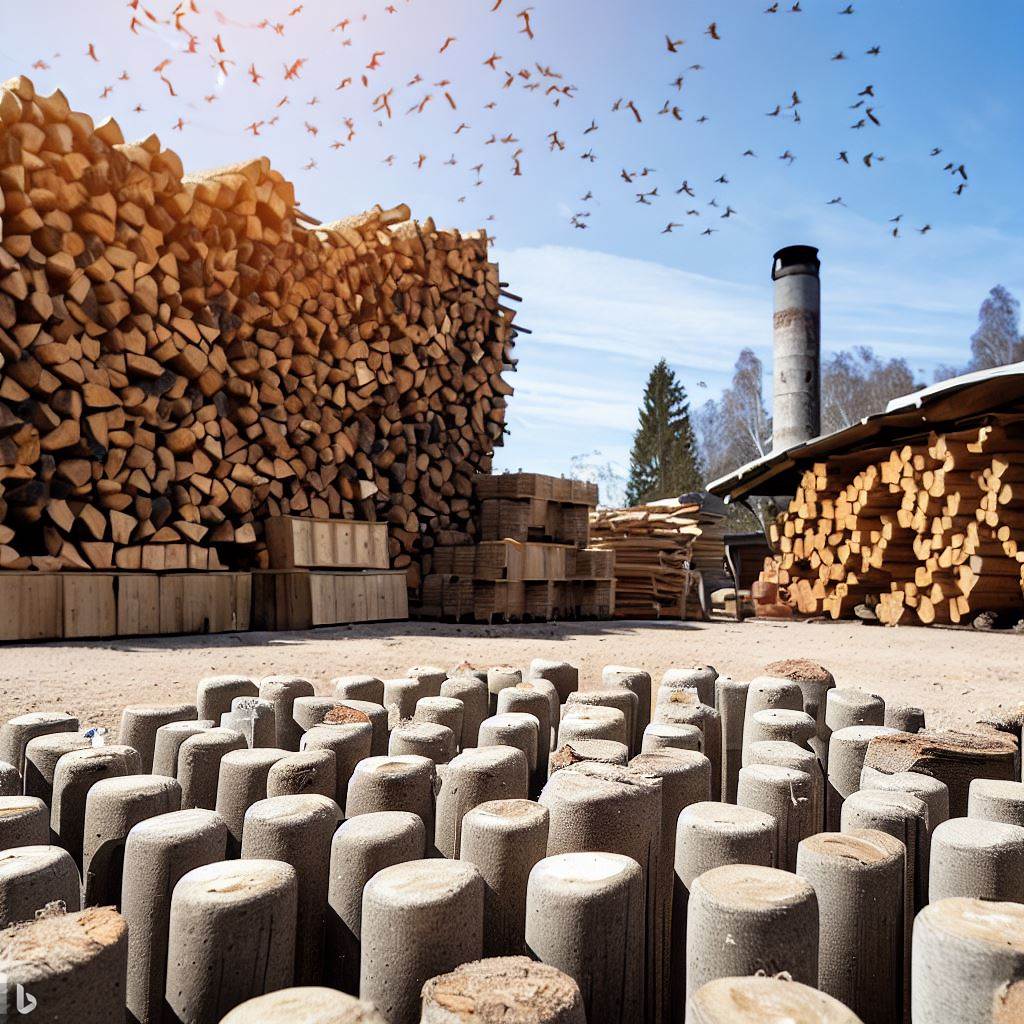
Wooden briquettes, firewood and kiln dried logs are all options
Wood briquettes vs logs
When comparing wood briquettes vs logs, there are notable distinctions. Wood briquettes have a higher energy density and burns longer compared to kiln-dried traditional logs.
They are more compact and have a lower moisture content, resulting in efficient combustion and virtually smokeless production. Wood briquettes are easier to handle, stack, and store due to their uniform shape and standardised dimensions.
While both options provide a convenient and eco-friendly wood fuel source, wood briquettes offer the advantage of longer-lasting heat (hence the alternative name heat logs) and improved consistency in performance.
Briquettes available from Cozilogs
Buy Cozilogs high density, high heat output, virgin pure wood quality briquettes. These are manufactured from timber, which has been sourced from sustainably managed and 100% UK virgin woodlands and forests. With a low moisture content of around 12%, buyers are guaranteed a clean and efficient burn. Briquettes are made to around twenty five centimetres (ten inches) in length. View our briquettes made in the UK at https://www.cozilogs.co.uk/bulk-briquettes-pallet.html. Products include:
- Full pallet – weighing 960kgs - click here
- Half pallet – weighing 480kgs – click here
- Quarter pallet – weighing 240kgs – click here
Contact us
We hope you found our article on "Utilising the Power of Wood Briquettes - Benefits and Uses" informative and helpful. If you have any further questions or enquiries regarding “what are briquettes,” or comparing briquettes vs logs or briquettes vs firewood, or the advantages of briquettes, please feel free to contact us.
You can call us at (01905) 954 736. Alternatively, you can complete our contact form, and we will promptly respond to your query.

